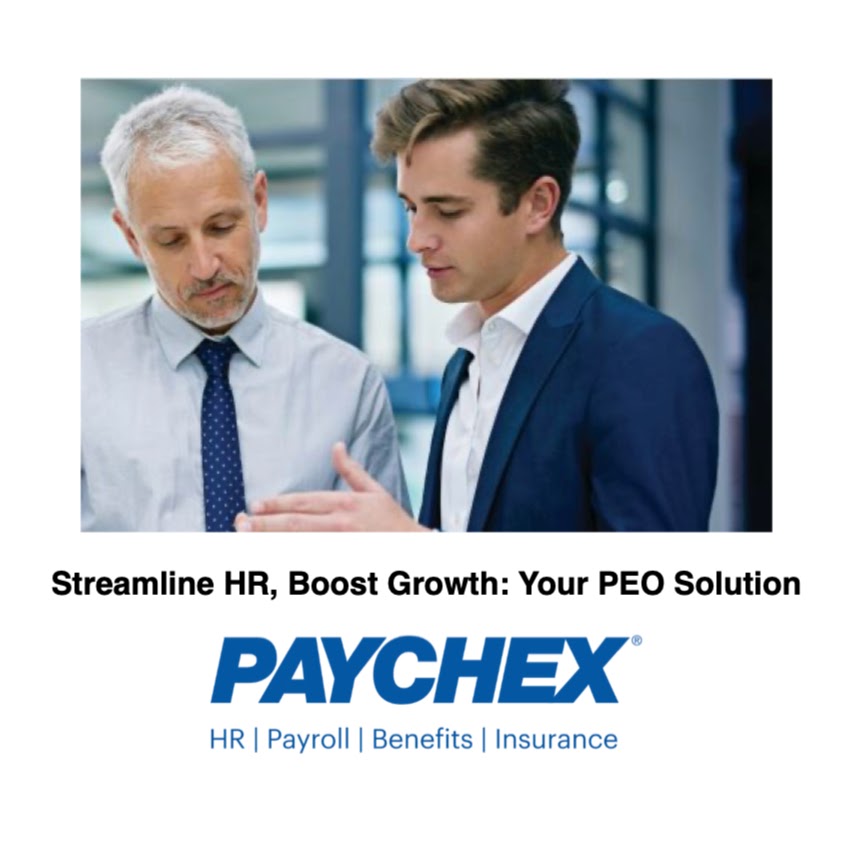As a business owner, you know that human resources functions like payroll, benefits management, and compliance can be frustratingly time-consuming and expensive. More and more companies are turning to Professional Employer Organizations (PEOs) to handle these critical but burdensome tasks. But not all PEOs are created equal. How do you find the right partner for your unique HR needs? Here’s a strategic approach to evaluating and comparing PEO providers.
Do Your Homework on the PEO Industry
Before reaching out to vendors, get up to speed on how PEOs work and current trends shaping the market. Key background knowledge will help you ask informed questions and assess how well a provider measures up. Spend time researching:
PEO Industry Basics
- Typical services offered: payroll, benefits, workers’ comp, compliance, recruiting, HR systems, and training
- Common pricing models: per employee per month fees, onboarding costs, and add-on fees
- Legal implications: the PEO becomes your co-employer, so find out whether the PEO provides a performance bond to protect you against their failure to perform

Market Size and Growth
- $152 billion industry projected to reach $163 billion by 2024
- 7-9% annual growth rate forecast through 2027
Major Players and Market Share
- Largest national PEOs by market share
- Market fragmentation: the top 5 hold <30% share
Service Geographic Reach
- Many national PEOs have limited regional support, so confirm coverage in your locations
Compliance Requirements
- Ask how they ensure compliance with labor laws, ACA, OSHA, FMLA, ADA, EEOC, and state/local laws
Risks and Downsides
- Lack of control over PEO’s employees and new employer procedures around employee management
- Potential service gaps or restrictions
Arm yourself with an understanding of PEOs so you can select a partner tailored to your priorities.
Clarify Your Goals and Must-Haves
Every company has unique pain points and objectives that a PEO partnership aims to solve. Reflect on your specific HR frustrations and needs. Ask yourself:
Where Are We Currently Wasting Time and Money on HR Tasks?
- Manual payroll processing, compliance paperwork, managing benefits plans
What HR Functions Do We Want to Offload?
- Payroll, compliance, benefits administration, recruiting
What HR Capabilities Do We Want to Gain Through a PEO?
- HR expertise, technology, expanded benefits, compliance assurance
What Are Our Top HR Priorities and Challenges?
- Reducing overhead costs, improving compliance, enhancing recruitment
How Do We Want a PEO to Impact Our Bottom Line?
- Reduce HR costs and reallocate savings to core business
Get clear on the outcomes you expect from PEO human resources outsourcing. This will drive which providers you short-list and inform your vendor questioning.
Create a Request for Proposal
Now that you know your HR goals, put together a request for proposal (RFP) that communicates your needs, priorities, and selection criteria upfront. The RFP provides a consistent structure to compare bid proposals. Include:
Company Overview and Current HR Pain Points
- Your company background, size, locations, industry, HR challenges
Specific HR Functions to Outsource
- Payroll, benefits management, recruiting, compliance, etc.
Service Requirements and Preferences
- Must match your locations, integration needs, preferred platforms
Timelines for Provider Response and Selection
- Allow 2-4 weeks for bid response, 2 weeks for selection
Legal Compliance Needs
- Specify all federal, state, and local laws to adhere to
Pricing Requirements
- Per employee per month fees, implementation costs, add-ons
Key Metrics for Evaluating Proposals
- Scorecard for Assessing Custom RFP Responses
Customizing your RFP helps attract PEOs well-suited to support your HR objectives and business.
Research PEO Providers in Your Area
Cast a wide net to find providers that offer the services you need in your region. Search:
Your Professional Network and Business Contacts
- Ask for PEO referrals from your network
PEO Databases Online
- Use PEO trade group directories like NAPEO
Local HR Associations and Chambers of Commerce
- Check for PEO partners or recommendations
Online Directories and Marketplaces
- Search PEO listing sites
Compile a list of potential vendors for further vetting. Focus on PEOs with a strong local presence and experience supporting businesses like yours.
Vet Short-Listed Providers Thoroughly
Now it’s time to dive into detailed vendor evaluations. Develop a checklist of must-have PEO qualifications based on your RFP criteria. Assess each prospective partner on:
Services Offered and Pricing Structure
- Match services to your needs, get fee estimates
Technical Expertise and Experience
- Years in business, client retention rates
HR Technology Platforms
- Evaluate their system functionality and integration
Client Portfolio and Retention
- Request client lists and retention rates
Leadership Team Backgrounds
- Research C-suite experience and tenure
Financial Stability and Growth
- Review audited financial statements
Reputation and Reviews
- Check third-party review sites for ratings
Compliance Record
- Ask for their latest SOC 1 report
Service Flexibility and Scalability
- Ensure they can adapt as your needs evolve
Collecting this data necessitates calls, meetings, site visits, client references, and independent research. But comprehensive due diligence sets you up to select a stellar PEO match.
Evaluate Provider Proposals and Costs
Issue your RFP to leading contender PEOs. Specify a timeline for receiving customized proposals. Be sure to collect:
Point-by-Point Responses Explaining How They Will Meet Your Requirements
- Require detailed explanations of their capabilities
Service Packages and Associated Pricing
- Have them break out all costs
Implementation Timelines
- Standard is 30-90 days
Contract Terms
- Review length, renewal, termination details
Account Management Plans
- Get specifics on your service team
Next, objectively score each proposal on how well it fulfills your RFP criteria. Weigh the pros, cons, and costs of each to narrow down to your top choice(s).
Ask the Right Questions
Interviews and Q&A sessions allow you to probe PEOs further before partnering. Tailor your questions to fill knowledge gaps and clarify uncertainties. Ask about:
Specific HR Processes and Technologies
- Get details on systems, automation, integrations
Client Support Model and Accessibility
- Confirm response times, escalation process
Customization Capabilities
- Learn how flexible they are to meet your needs
Data Security Provisions
- Ask about encryption, access controls, security audits
Performance Metrics and Reporting
- Verify you get the reports you need to manage the relationship
Disaster Recovery Provisions
- Confirm backup systems and business continuity plans
Other Relevant Services Provided
- Inquire about add-ons like compliance services
The right questions will illuminate differences between providers as you zero in on the optimal match.
Check Client References
Speaking with current clients delivers invaluable insight into a provider’s offering and service. Make sure to ask:
How Long Have You Partnered with the PEO?
What HR Functions Do They Handle for You?
- Get specifics on outsourced tasks
What Do You Like Most About the PEO’s Services?
- Learn the pros of working with them
How Responsive and Accessible Is Their Support Team?
- Check on issue resolution timeliness
How Have They Improved Your HR Operations?
- Understand operational impacts and ROI
What Challenges Have You Encountered?
- Learn about any issues or complaints
Why Do You Continue Partnering with Them?
- Confirm overall satisfaction level
Candid feedback directly from clients carries more weight than any marketing message. Prioritize PEOs with proven long-term client relationships.
Negotiate a Customized Agreement
Once you’ve selected your top choice, move to contract negotiations. Work closely with the provider to refine an agreement addressing:
Specific HR Services Covered
- Detail exact tasks to be outsourced
Performance Standards and Metrics
- Define service levels and reporting needs
Implementation Timeline and Plans
- Confirm all rollout milestones and dates
Client Reporting Requirements
- Specify regular reports and cadence
Billing Procedures
- Align invoice and payment terms
Contract Length and Terms
- Negotiate optimal multiyear duration
Cancellation and Termination Provisions
- Add appropriate notice periods and exit terms
Other Special Considerations
- Address any unique needs or customizations
A customized contract gives you greater assurance that the PEO relationship will fulfill your human resources objectives. Don’t leave this vital step to the last minute!
Reevaluate Periodically
Signing a PEO agreement isn’t the end of your due diligence. Regularly assess performance against contract terms and your evolving business needs. Schedule quarterly reviews to discuss:
New HR Challenges to Address
- Discuss emerging needs and gaps
Client Satisfaction Levels
- Get formal feedback on service quality
Service Delivery Metrics
- Review reports on compliance, SLAs, etc.
Technology Functionality
- Assess platform issues or desired upgrades
Performance Trends and Improvements
- Analyze progress and areas for improvement
Billing Accuracy and Value Received
- Confirm accurate invoicing and ROI
Contract Adjustments Required
- Renegotiate terms as you see fit
Periodic check-ins enable you to provide feedback, realign if necessary, and ultimately get the most value from your PEO partnership over the long-term.
Selecting a PEO takes time upfront. But proper vetting and due diligence are crucial for outsourcing such a critical business function. Define your needs, evaluate providers thoroughly, and negotiate an agreement tailored to your goals. This allows you to implement a customized HR solution through a trusted PEO advisor and get strategic value from the partnership for years to come.



